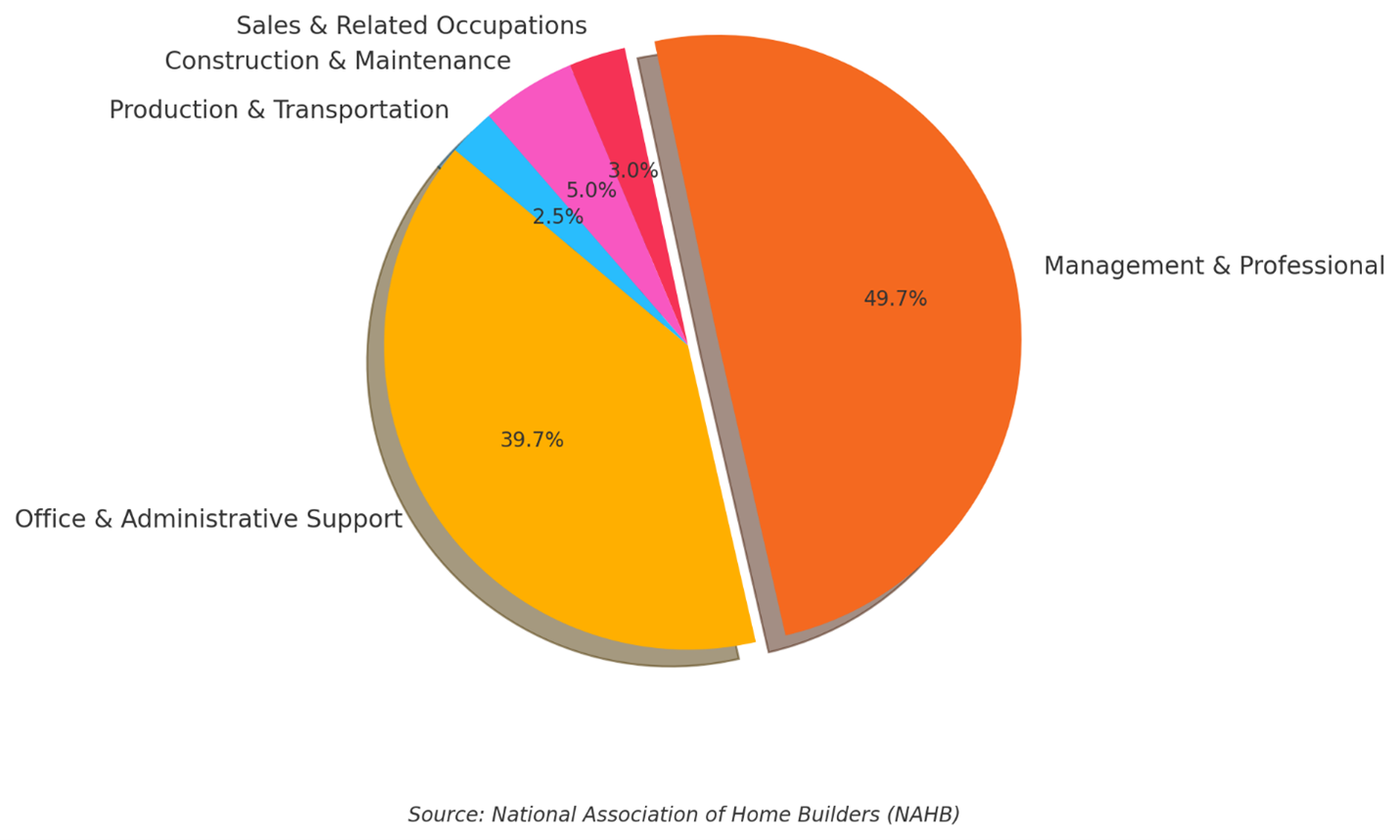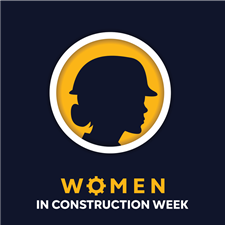Building the Future: How Women Are Transforming the Construction Industry
The U.S. construction industry is currently experiencing a significant transformation in the workforce. At the center of this change is the increasing presence of women who are stepping up to fill in critical gaps and address labor shortages. Construction has traditionally been viewed as a male-dominated field; however, construction is now witnessing a shift as more women are entering the industry and taking on various roles (i.e., skilled laborers, site superintendents, engineers, project managers, and executive leadership). This shift is not just about representation—it’s about necessity. According to the National Association of Home Builders (NAHB), women represented 10.8 percent of the U.S. construction workforce in 2023, an increase from 9.3 percent in 2002. The total number of women employed in construction rose to approximately 1.3 million, marking a record high. As labor shortages challenge the industry and the demand for skilled professionals grows, women are proving to be a driving force in reshaping the field and redefining traditional roles. Their unique perspectives, problem-solving abilities, and leadership skills are contributing to a more dynamic, efficient, and forward-thinking construction landscape. With evolving workplace policies, targeted recruitment efforts, and increased opportunities for education and training, the construction industry is becoming more accessible for women, ensuring a stronger, more resilient and sustainable future for the industry sector.
The Great Recession’s Impact
The Great Recession (2007-2009) had a devastating effect on the construction industry, causing a sharp decline in employment. NAHB data shows that women in construction experienced a nearly 30 percent drop in employment, with their numbers falling to 807,000 by 2010. Although the industry began recovering in the following years, with employment climbing to 970,000 by 2017, it remained below pre-recession levels.
However, in recent years, women’s participation in construction has surged, with a record 1.287 million women employed in 2023. This growth highlights a renewed industry focus on inclusivity, recruitment, and workforce deBuildvelopment efforts aimed at bridging labor shortages.
Breaking Barriers and Changing Perceptions
While construction has long been associated with a predominantly male workforce, women are increasingly making their mark across various roles and disciplines. They are not only excelling in technical and leadership positions but also driving innovation in project management, safety standards, and sustainability initiatives.
One of the most significant factors attracting women to construction is the industry's growing emphasis on construction management and technology. With the rise of digital project management tools, Building Information Modeling (BIM), automation, and sustainability-focused innovations, construction is evolving beyond physical labor and opening doors for professionals with problem-solving, leadership, and technical expertise. This shift has made construction management an increasingly appealing career path for women, offering structured career growth, competitive salaries, and opportunities to lead in a traditionally male-dominated field.
According to data from the National Association of Home Builders (NAHB), women in construction occupy diverse roles, primarily concentrated in management, professional, and office support positions, as illustrated in Figure 1. The majority (49.7 percent) hold positions in management, professional occupations, and administrative support (39.7 percent), while representation in sales (3.0 percent), construction and maintenance (5.0 percent), and production-related roles (2.5 percent) remains comparatively lower.

Their growing presence challenges outdated perceptions and demonstrates that success in construction is based on skill, expertise, and determination rather than gender. As companies adapt to these shifts, they are rethinking traditional workplace structures and creating environments that better support talent development across the board.
 Filling a Critical Need
Filling a Critical Need
The U.S. construction industry is facing a skilled labor shortage, with an estimated 500,000 additional workers needed to meet current demand. Women are helping to bridge this gap by pursuing careers in construction-related fields (i.e., civil engineering, construction engineering management, project management and skilled trades). Additionally, apprenticeship programs, training initiatives, and mentorship opportunities are creating pathways for women to not only enter but also succeed in the industry.
Success Stories and Industry Support
 Companies are investing in programs that encourage women to pursue construction careers through targeted recruitment, scholarships, and workplace policies that support career advancement. Industry associations such as the National Association of Women in Construction (NAWIC) and Women in Construction (WIC) Week (observed during the first week of March), highlight the impact of women in the field and advocate for greater representation and participation. NAWIC held the first WIC Week in 1998 and it has grown and expanded every year since.
Companies are investing in programs that encourage women to pursue construction careers through targeted recruitment, scholarships, and workplace policies that support career advancement. Industry associations such as the National Association of Women in Construction (NAWIC) and Women in Construction (WIC) Week (observed during the first week of March), highlight the impact of women in the field and advocate for greater representation and participation. NAWIC held the first WIC Week in 1998 and it has grown and expanded every year since.
The Future of Women in Construction
For women looking to take their careers in construction to the next level, pursuing higher education can be a game-changer. The Master of Engineering in Construction Engineering Management from the University of Alabama at Birmingham (UAB) offers a flexible, industry-focused program designed to equip professionals with the knowledge and leadership skills needed to excel in construction engineering management. Whether you are seeking to advance in your current role or transition into leadership, this program provides the tools to succeed in today’s evolving construction industry. Learn more about how this degree can help shape your future.
As more women enter the construction workforce, the industry is becoming more adaptable and innovative. With advancements in technology, a focus on sustainability, and the need for skilled professionals at an all-time high, the opportunities for women in construction are endless. The shift towards broader workforce engagement is not only addressing labor shortages but also shaping the future of construction by fostering a more collaborative and forward-thinking environment.
Conclusion
The construction industry is evolving, and women are playing a crucial role in driving that evolution. By supporting career development and empowering women to succeed in construction careers, we are not only bridging the workforce gap but also building a stronger, more resilient industry for generations to come.
